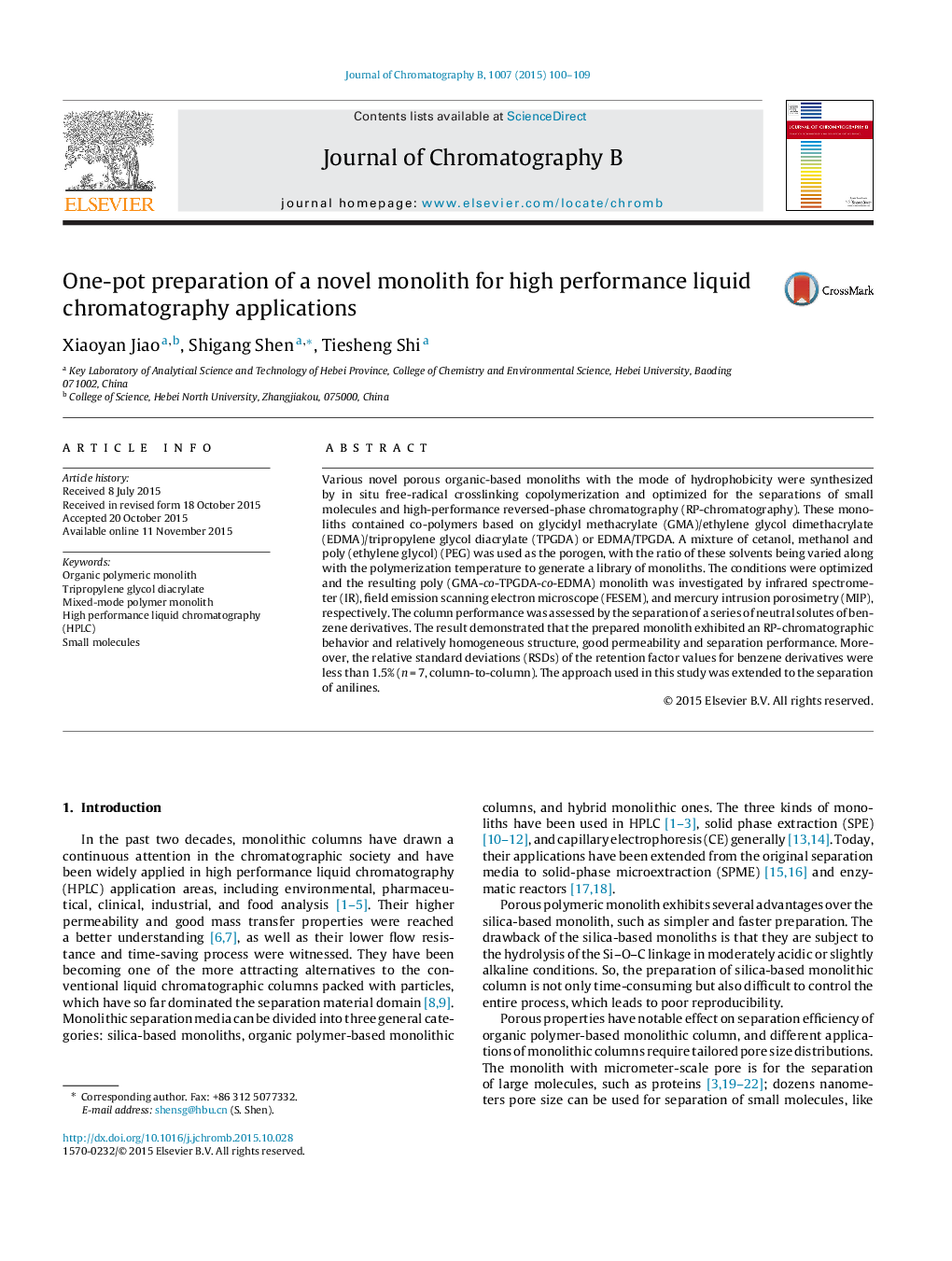| Article ID | Journal | Published Year | Pages | File Type |
|---|---|---|---|---|
| 1212003 | Journal of Chromatography B | 2015 | 10 Pages |
•A new polymeric monolith was prepared by glycidyl methacrylate(GMA), tripropylene glycol diacrylate (TPGDA), and ethylene dimethacrylate (EDMA).•The column was used as the stationary phase of high performance liquid chromatography (HPLC).•Separate the mixture of small molecules compounds.•The column efficiency for anthracene was high to 18,867 theoretical plates per meter.
Various novel porous organic-based monoliths with the mode of hydrophobicity were synthesized by in situ free-radical crosslinking copolymerization and optimized for the separations of small molecules and high-performance reversed-phase chromatography (RP-chromatography). These monoliths contained co-polymers based on glycidyl methacrylate (GMA)/ethylene glycol dimethacrylate (EDMA)/tripropylene glycol diacrylate (TPGDA) or EDMA/TPGDA. A mixture of cetanol, methanol and poly (ethylene glycol) (PEG) was used as the porogen, with the ratio of these solvents being varied along with the polymerization temperature to generate a library of monoliths. The conditions were optimized and the resulting poly (GMA-co-TPGDA-co-EDMA) monolith was investigated by infrared spectrometer (IR), field emission scanning electron microscope (FESEM), and mercury intrusion porosimetry (MIP), respectively. The column performance was assessed by the separation of a series of neutral solutes of benzene derivatives. The result demonstrated that the prepared monolith exhibited an RP-chromatographic behavior and relatively homogeneous structure, good permeability and separation performance. Moreover, the relative standard deviations (RSDs) of the retention factor values for benzene derivatives were less than 1.5% (n = 7, column-to-column). The approach used in this study was extended to the separation of anilines.
